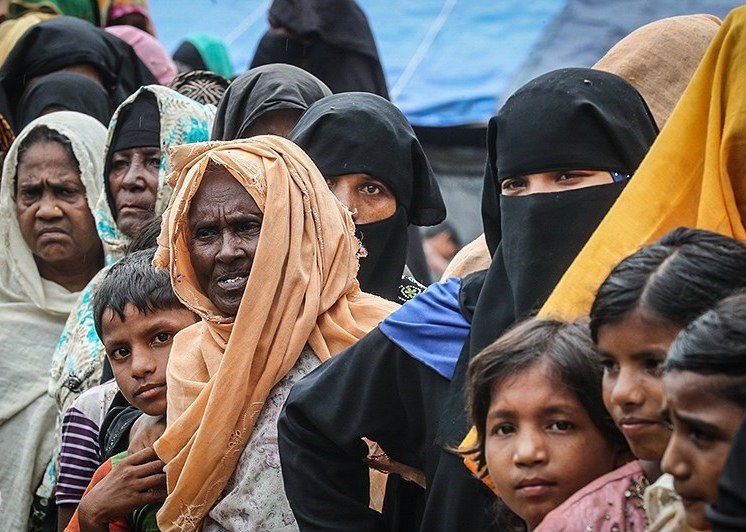The US Formally Recognizes the Rohingya Genocide
Seyyed Mahmoud Hosseini
The image portrays the uncertain faces of the Rohingya people who are displaced from their homeland. At the peak of the crisis, about 740,000 fled to Bangladesh.
April 27, 2022
The Rohingya people can be classified as an ethnic minority of 1.3 million Muslim people currently residing primarily in the Arakan state of Myanmar (formerly called Burma). Their origins can be traced back as early as the 1430s when a number of Muslims initially settled within Arakan. After a tumultuous series of major political changes within the country in the late 1940s, already-brewing discrimination against the group finally erupted into a long timeline of serious crimes. Though some argue that the real persecution only began in the 1970s, this perpetual discrimination has never stopped, and is still present in the country today.
Due to recent events in Bucha and Ukraine and civil injustices in countries like Russia, there has been renewed attention on the war crimes committed in Myanmar against the Rohingya People. The U.S., almost five years after the peak of crisis in 2017, has decided to formally classify the crimes as a genocide enabled by the Myanmar state and military.
The 2017 genocide began with a military crackdown in 2016 that evolved into what became classified as large scale human rights violations by several groups, governments and organizations. Crucially, Myanmar’s Military Chief Senior General Min Aung Hlaing is considered as one of the masterminds behind the alleged ethnic cleansing campaign. The violations were listed as extrajudicial killings, executions, rapes, infanticide, and a series of planned arsons upon civilian occupied bouldings such as schools and businesses. MSF estimated that around 6,700 people died in the first month alone, 730 of that number being below 5 years old.
U.S. secretary of state Antony Blinken, who is partially responsible for determining whether atrocities have been committed, delivered a speech regarding the issue at the Holocaust Memorial Museum on March 21 of this year.
“The United States has concluded that genocide was committed seven times. Today marks the eighth, as I have determined that members of the Burmese military committed genocide and crimes against humanity against Rohingya,” Blinken said.
This conclusion was reached upon thorough review of official documents, accounts, and statistics, with an estimated death toll of 9,000 in the 2017 attacks, and an additional 740,000 who were forced to flee to Bangladesh as a result of the conflict. Classifying genocides requires a large amount of evidence, and Blinken claimed that these numbers demonstrate that the crimes committed were largescale, widespread, and most importantly systematic. This cumulative evidence in his words, is crucial for reaching a determination of crimes against humanity.
“The United States reaffirms its broader commitment to accompany Rohingya on this path out of genocide – toward truth, toward accountability, toward a home that will welcome them as equal members, that will respect their human rights and dignity, alongside that of all people in Burma,” Blinken said.
Many humanitarian groups and countries have expressed solace. In short, the UN and international court of justice are working towards possibly bringing justice to the Rohingya people who have faced systematic injustice.



